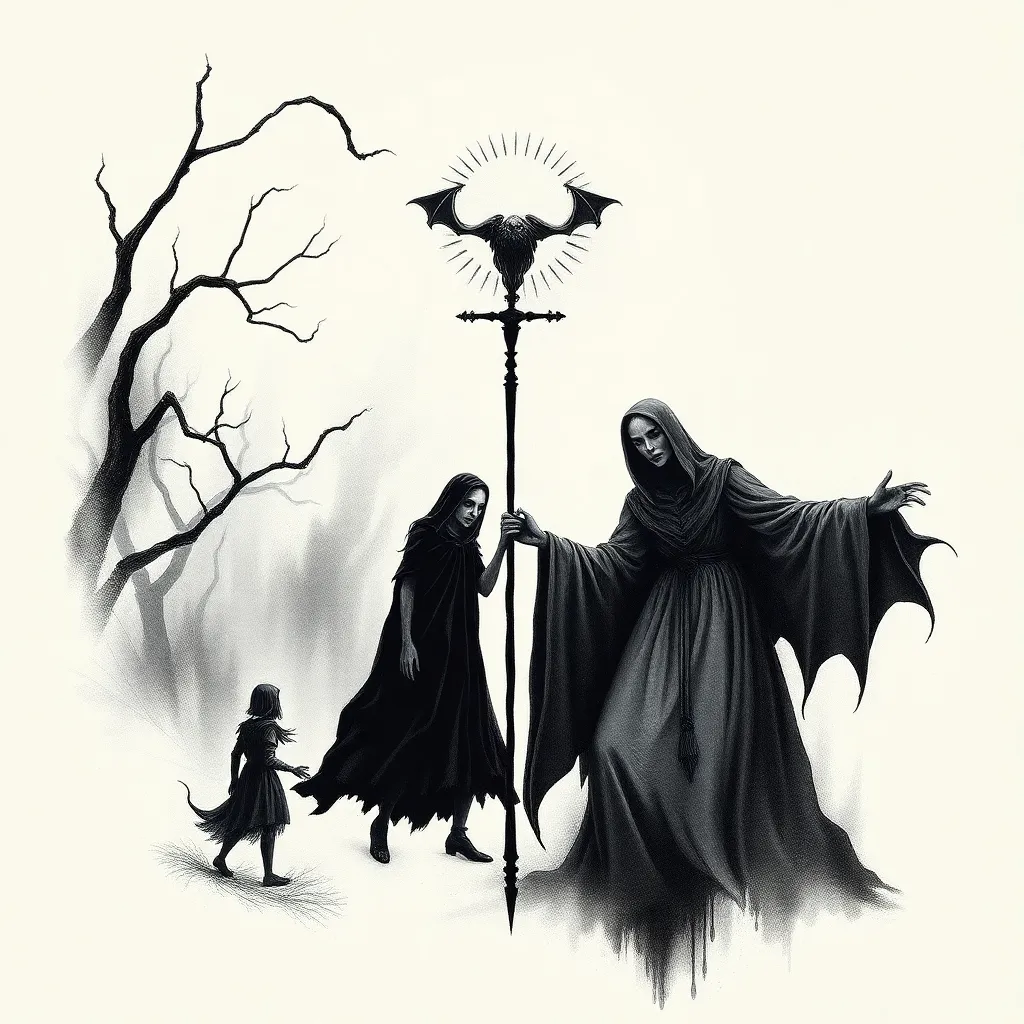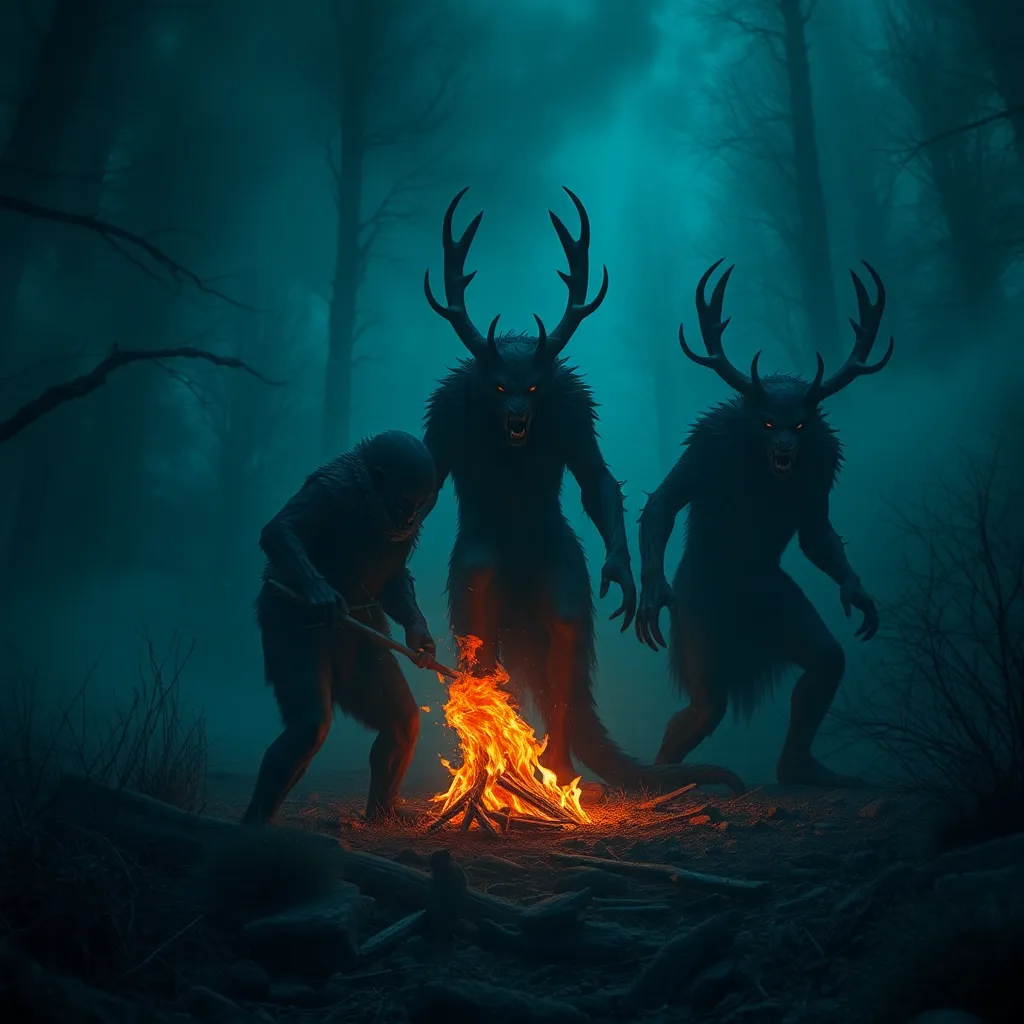The Dybbuk and the Vampire: A Comparative Study of Slavic Supernatural Beings
I. Introduction
Slavic folklore is a rich tapestry of myths, legends, and supernatural beings that reflect the cultural values and historical experiences of the Slavic people. Among the numerous entities that populate this folklore, the Dybbuk and the Vampire stand out as two of the most intriguing and complex figures. While the Dybbuk originates from Jewish tradition, its integration into Slavic folklore highlights the region’s cultural syncretism. Conversely, the Vampire, with its Slavic roots, has evolved into a universal symbol of horror and fascination.
The purpose of this study is to explore the similarities and differences between the Dybbuk and the Vampire, examining their historical contexts, characteristics, themes, cultural impacts, and modern interpretations. Through this comparative analysis, we can gain deeper insights into how these supernatural beings reflect human fears, desires, and the struggles with mortality.
II. Historical Context of the Dybbuk and the Vampire
A. Origins and evolution of the Dybbuk in Jewish folklore
The Dybbuk is a malevolent spirit in Jewish folklore, believed to be the dislocated soul of a deceased person who possesses the body of a living individual. Its origins can be traced back to the Kabbalistic teachings of the 16th century, particularly in the mystical traditions of Eastern European Jewry. The term “Dybbuk” itself comes from the Hebrew word “dibbuk,” meaning “to cling” or “to attach.”
Over time, the Dybbuk has evolved from its early portrayals in religious texts to a more secular representation in literature and theater, epitomized by S. Ansky’s play “The Dybbuk,” which premiered in 1920. This play not only popularized the Dybbuk but also emphasized themes of love, loss, and the consequences of unresolved grief.
B. Historical roots of the Vampire in Slavic culture
The Vampire has a rich history in Slavic cultures, with roots that can be traced back to ancient Slavic beliefs in the afterlife and the souls of the deceased. Unlike the Dybbuk, which is specifically tied to Jewish tradition, the Vampire is a more universal figure found in various forms across different cultures. In Slavic folklore, Vampires are often depicted as revenants—deceased individuals who return to the living world to harm the living.
Historical events, such as the spread of the plague and the fear of death, contributed to the development of vampire legends, with communities creating elaborate rituals to protect themselves from these undead beings. The tales of the Vampire became intertwined with local customs, leading to a rich tapestry of regional variations.
C. Influence of regional beliefs and historical events on both beings
Both the Dybbuk and the Vampire were shaped by the historical and cultural contexts of their regions. For instance, the trauma of war, persecution, and the collective grief experienced by Jewish communities influenced the characterization of the Dybbuk as a spirit of unresolved pain. Conversely, the Vampire’s association with death and disease was exacerbated by historical pandemics and societal fears surrounding mortality.
III. Characteristics and Traits
A. Physical and behavioral attributes of the Dybbuk
The Dybbuk is typically portrayed as an invisible entity that possesses the living, often affecting their behavior and mental state. It is believed to be a restless soul, bound to the living world due to unresolved issues or unfinished business. The symptoms of possession can include:
- Uncontrollable outbursts
- Changes in personality
- Speaking in tongues or unfamiliar languages
B. Description of the Vampire’s appearance and abilities
In contrast, Vampires are often depicted as pale, attractive figures with sharp fangs and an otherworldly charm. They are typically characterized by their immortality, superhuman strength, and ability to shape-shift, often transforming into bats or mist. Common traits include:
- Heightened senses
- Blood-drinking habits
- Resistance to conventional forms of harm
C. Psychological and emotional aspects of both entities
Both the Dybbuk and the Vampire embody deep psychological and emotional themes. The Dybbuk represents the struggle with grief, guilt, and the longing for closure, while the Vampire symbolizes existential fears surrounding death and the unknown. This psychological complexity adds depth to their narratives, making them compelling figures in folklore.
IV. Themes and Symbolism
A. The Dybbuk as a representation of grief and unresolved issues
The Dybbuk serves as a powerful symbol of the emotional turmoil that arises from loss and unresolved conflicts. It embodies the idea that unresolved issues can linger beyond death, affecting both the living and the dead. This theme resonates deeply within Jewish cultural contexts, where the importance of memory and remembrance is paramount.
B. The Vampire as a symbol of death and the fear of the unknown
The Vampire, on the other hand, represents humanity’s fear of death and what lies beyond. It embodies the anxiety surrounding mortality, the unknown afterlife, and the concept of eternal life through unnatural means. This fear is often reflected in the Vampire’s insatiable thirst for blood, symbolizing the consumption of life itself.
C. Common themes: possession, mortality, and the afterlife
Despite their differences, both the Dybbuk and the Vampire share common themes related to possession, mortality, and the afterlife. They challenge the boundaries between life and death, forcing individuals to confront their beliefs about existence and the consequences of unresolved issues.
V. Cultural Impact and Representation in Literature
A. The Dybbuk in Jewish literature and theater
The Dybbuk has made a significant impact on Jewish literature, particularly in theater. Ansky’s play has been adapted and performed widely, bringing the Dybbuk into contemporary discussions of identity, trauma, and spirituality. Its portrayal of possession and the afterlife continues to resonate with audiences today.
B. The Vampire in Slavic folklore and its evolution in literature
The Vampire has evolved dramatically in literature, transitioning from folklore to modern horror. Classic works such as Bram Stoker’s “Dracula” and contemporary vampire novels have shaped the popular perception of the Vampire, often blending traditional Slavic elements with modern themes of romance and existentialism.
C. Comparative analysis of their portrayals in modern media
Both the Dybbuk and the Vampire have found their way into modern media, with films, television shows, and novels exploring their stories from fresh perspectives. The Dybbuk is often portrayed in psychological horror contexts, while Vampires frequently appear in romanticized settings. This evolution reflects changing cultural attitudes and the ongoing fascination with these supernatural beings.
VI. Rituals and Beliefs Surrounding the Dybbuk and the Vampire
A. Traditional rituals for dealing with the Dybbuk
In Jewish tradition, rituals for expelling a Dybbuk often involve prayers and religious ceremonies conducted by a rabbi. These rituals aim to provide closure for the restless spirit and restore peace to the possessed individual. Common practices include:
- Reciting specific prayers
- Performing exorcisms
- Engaging in communal support and mourning
B. Folkloric practices related to Vampire encounters
To protect themselves from Vampires, Slavic communities developed various folkloric practices, such as:
- Staking the corpse through the heart
- Placing garlic or holy objects around the grave
- Using mirrors or water to ward off the undead
C. The role of community and religion in shaping these rituals
The role of community and religion is vital in shaping both Dybbuk and Vampire rituals. In Jewish culture, community support is crucial for dealing with grief and possession, while Slavic practices highlight collective fears and protective measures against the undead. Both reflect a deep-seated belief in the spiritual world and the need for communal resilience.
VII. Modern Interpretations and Adaptations
A. Contemporary depictions of the Dybbuk in films and literature
In recent years, the Dybbuk has been reimagined in various films and literature, often focusing on psychological horror elements. Movies like “The Possession” (2012) explore the Dybbuk’s haunting nature, emphasizing themes of grief and loss, while




